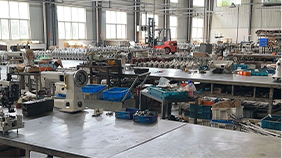lifting belt sewing
The Art and Craft of Lifting Belt Sewing
Lifting belts have become a crucial accessory for weightlifters, powerlifters, and fitness enthusiasts alike. These belts provide the necessary support to the lower back, helping to maintain proper posture while lifting heavy weights. However, not many people consider the craftsmanship that goes into creating a high-quality lifting belt. One of the most critical aspects of its production is the sewing process, which ensures durability, functionality, and aesthetic appeal.
The Importance of Quality Sewing
When it comes to lifting belts, the sewing technique used is paramount. The stitching not only keeps the different layers of material together but also plays a significant role in the belt’s overall functionality. High-quality lifting belts typically consist of multiple layers of leather, synthetic materials, or a combination of both. Each layer serves a specific purpose—to provide support, comfort, and maximum efficiency during lifts.
The sewing must be robust and precise to handle the immense tension and pressure that lifting belts endure. A poorly sewn belt can lead to seams ripping, which could potentially result in injury during a workout. Therefore, manufacturers often employ heavy-duty sewing machines and thread to ensure that every belt meets the highest standards of strength and reliability.
Materials Used in Lifting Belt Sewing
The choice of material significantly influences the sewing process and the final product's quality. Leather is a popular choice for lifting belts due to its sturdiness and ability to mold to the wearer’s body over time. However, using leather requires specialized sewing techniques, as it is thicker and stiffer than many synthetic materials.
On the other hand, synthetic materials like nylon or neoprene offer flexibility and comfort, making them suitable for different types of lifters. While they may be easier to sew, care must be taken to ensure that the stitches hold up under stress. Manufacturers must ensure that they select materials that are not only suitable for lifting but also compatible with their sewing processes.
lifting belt sewing

Techniques and Methods
There are several sewing techniques employed in the production of lifting belts. One common method is the double-stitching technique, which involves sewing two parallel lines of stitching. This method enhances the strength of the seams, reducing the likelihood of failures. Additionally, some manufacturers may use bar tacking at stress points, reinforcing areas that experience greater tension and wear.
Another important aspect of lifting belt sewing is the finished edges. Properly finishing the edges prevents fraying, maintaining the belt's aesthetic appeal and longevity. Techniques such as folding, heat sealing, or adding a binding can be used to achieve clean and durable edges.
Customization and Personalization
In recent years, there has been a growing trend toward customization in the fitness industry, with lifters seeking belts that reflect their style and personality. Many manufacturers now offer options for personalized designs, colors, and even names or logos to be sewn onto the belts. This personal touch not only makes the lifting experience more enjoyable but also fosters a sense of ownership and pride among lifters.
Conclusion
Lifting belt sewing is an intricate blend of art and science that plays a pivotal role in the performance and safety of weightlifters. From the selection of high-quality materials to the application of precise sewing techniques, every aspect contributes to the final product. As the fitness industry continues to evolve, the craftsmanship behind lifting belts remains a fundamental element that supports athletes in their pursuit of strength and fitness. Whether you’re a seasoned lifter or just starting, understanding the importance of a well-sewn lifting belt can enhance your lifting experience and ensure safety in your training regimen.
-
Heavy Duty Leather Sewing Machine: A Must-Have for Professional LeatherworkNewsMay.28,2025
-
Leather Sewing Machine: Essential for High-Quality LeathercraftNewsMay.28,2025
-
Extra Heavy Duty Sewing Machine for Premium Leather ApplicationsNewsMay.28,2025
-
Walking Foot Cylinder Arm Sewing Machine: Precision and Power CombinedNewsMay.28,2025
-
Industrial Cylinder Arm Sewing Machine: Engineered for High-Performance StitchingNewsMay.28,2025
-
Cylinder Bed Sewing Machine: A Powerful Solution for Precision StitchingNewsMay.28,2025
-
Zigzag Sewing MachineNewsMay.12,2025





























